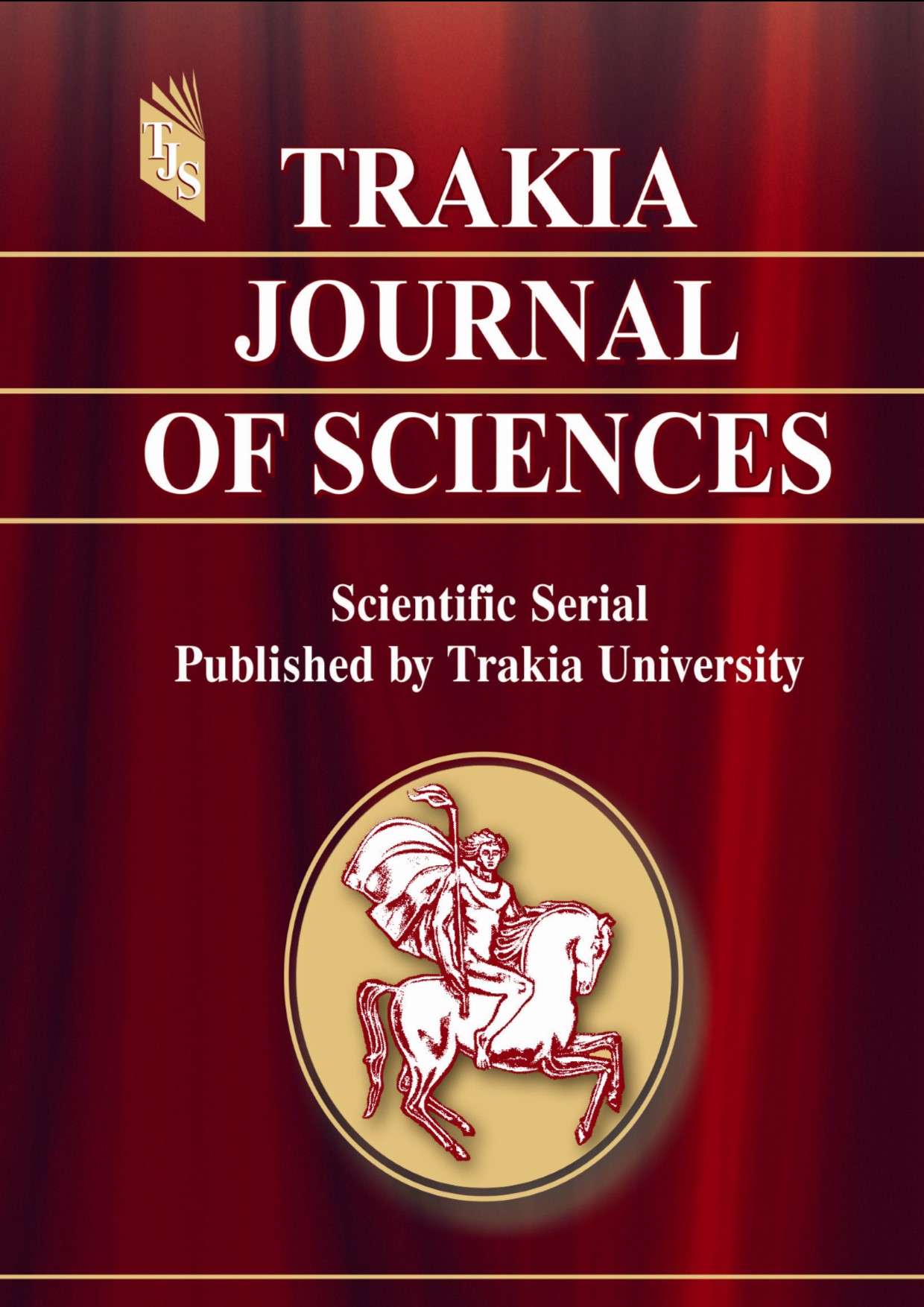REGIONAL DEMOGRAPHIC DISBALANCES IN BULGARIA - ANALYSIS OF POPULATION DYNAMICS, BIRTH RATE AND MORTALITY
DOI:
https://doi.org/10.15547/tjs.2025.s.02.046Keywords:
demographic disbalance, birth rate, mortality, development, populationAbstract
This article AIMS to analyze the regional demographic disbalances in Bulgaria for the period 2003-2023. It examines the main demographic processes – birth rate, mortality, natural increase and migration - and assesses their impact on the socio-economic development of the country, including the labor market, health, education and pension systems. The study is based on a quantitative analysis of statistical data from the National Statistical Institute (NSI) and INFOSTAT for the period 2003-2023. Standard demographic METHODS are applied to calculate and analyse birth rate and mortality. Data on internal and external migration, as well as on the population structure by place of residence (urban/rural) and by region are analysed. The analysis of the obtained results reveals critical demographic trends: a significant decrease in the population of Bulgaria by 1 355 792 people over the last 20 years, determined by a persistently low birth rate, a high death rate and a negative natural increase, which in 2023 will reach -6.8‰. Regional imbalances are deepening, with intensive depopulation of rural and northern areas of the country. Demographic ageing is accelerating, with the average age of the population reaching 45.2 years. These processes are putting severe pressure on social systems, leading to labour shortages and contributing to economic instability.
References
Official website of NSI, https://www.nsi.bg/sites/default/files/files/metadata/Pop_1_Metodology_births.pdf
Official website of NSI, https://www.nsi.bg/sites/default/files/files/metadata/Pop_2_Metodologia_mortality.pdf
Official website of NSI, https://www.nsi.bg/sites/default/files/files/metadata/Pop_5_Metodology_migration.pdf
Official website of Infostat, infostat.nsi.bg/infostat/pages/module.jsf?x_2=3
Econ.bg. Population and Demographic Processes in 2003, https://econ.bg/_l.a_i.117285_at.4.html
Official website of NSI, https://www.nsi.bg/file/19766/Population2013_AUIT2RS.pdf
Official website of NSI,
https://www.nsi.bg/file/24833/Population2023_ZYBLHGJ.pdf
Traykov, T., Tsvetkov, K., Trends and specific in reproductive behavior of the bulgarian population at the beginning of the 21-st century, Journal of the Bulgarian Geographical Society, Vol.41, pp. 43-47, 2019
Official website of Ministry of Health, Annual Report on the Health Status of Citizens for 2023,https://www.nfp-drugs.bg/wpcontent/uploads/2025/01/godishen-doklad-za-zdraveto-2023.pdf
Bloom, D., Luca, D., The Global Demography of Aging: Facts, Explanations, Future, Social Science Research Network (North-Holland), Vol.1, pp. 3-56, 2016
Légaré, J., Population Aging: Economic and Social Consequences, Université de Montréal, pp.11737-11741, 2001
Ye, P., The Implications of Population Aging for Socio-economic Development, Journal Advances in Economic, Management and Political Sciences, Vol.142, pp.28-34, 2024
Official website of NSI, https://www.nsi.bg/sites/default/files/files/metadata/Pop_6_Metodology_projections.pdf
Paskaleva, M., Demographic Changes and Inequalities: Regional Differences with a Focus on Rural areas in Bulgaria, Demographic Research, 33 (12), pp.327-346, 2015
Official website of Ministry of Labour and Social Policy in Republic of Bulgaria, Labour Market Analysis 2023, https://mlsp.government.bg/uploads/19/zaetost/analiz-za-pazara-na-truda-prez-2023-g.pdf
Bardarov, G., Ilieva, N.,Demographic Trends in Bulgaria, Geography and Geopolitics: Current Challenges, Sofia St. Kliment Ohridski University Press, pp.40-52, 2013
Rohova, m., Atanasova, E. Socio-economic health inequalities in use of health care services in Bulgaria, Varna Medical Forum, Vol.6, Issue 1, 2017
Guthrie, C., Norfolk- Beadle, A., Santos, A., Henderson, K., Rawkins, C., Fordham, E., Li, R. The Bulgarian education system, OECD reviews of evaluation and assessment, 2022
Zdravkov, S. Regional inequalities and educational changes in Bulgaria: a comparative analysis of the data from National External Assessment, Sociologically Problems 2:530-556, 2019
Poteraj, J. Pension system in Bulgaria, University Library of Munich, Germany, 2007
Pandurska, P. Pensions from the social security system in Bulgaria in the context of population aging in the period 2018-2022, Vol.42, No.1, pp-35-59, ISSN 2367-9174, 2024
Mladenov, M., Ilieva, M., The depopulation of the Bulgarian villages, Bulletin of Geography. Socio-economic Series journal, Vol. 17, ISS 17, pp 99-100, 2012
Official website of Ministry of Labour and Social Policy in Republic of Bulgaria, https://www.mlsp.government.bg/demografska-politika
Council of Ministers of the Republic of Bulgaria, Updated National Strategy of Demographic Development of the population in the Republic of Bulgaria (2012-2030)
Tomova, I., Stoychev, L., Ivanov, M, Demographic Imbalances and Social Inequalities Among the Major Ethnic Groups in Bulgaria, Bulgarian Academy of Science, Vol. 5, pp.382, 2020
May, J., Population Policies in Europe- L’Europe en formation, No.377, pp.136-150, 2015
Official website of European Commission, https://commission.europa.eu/index_en

Downloads
Published
Issue
Section
License

This work is licensed under a Creative Commons Attribution-NonCommercial 4.0 International License.


